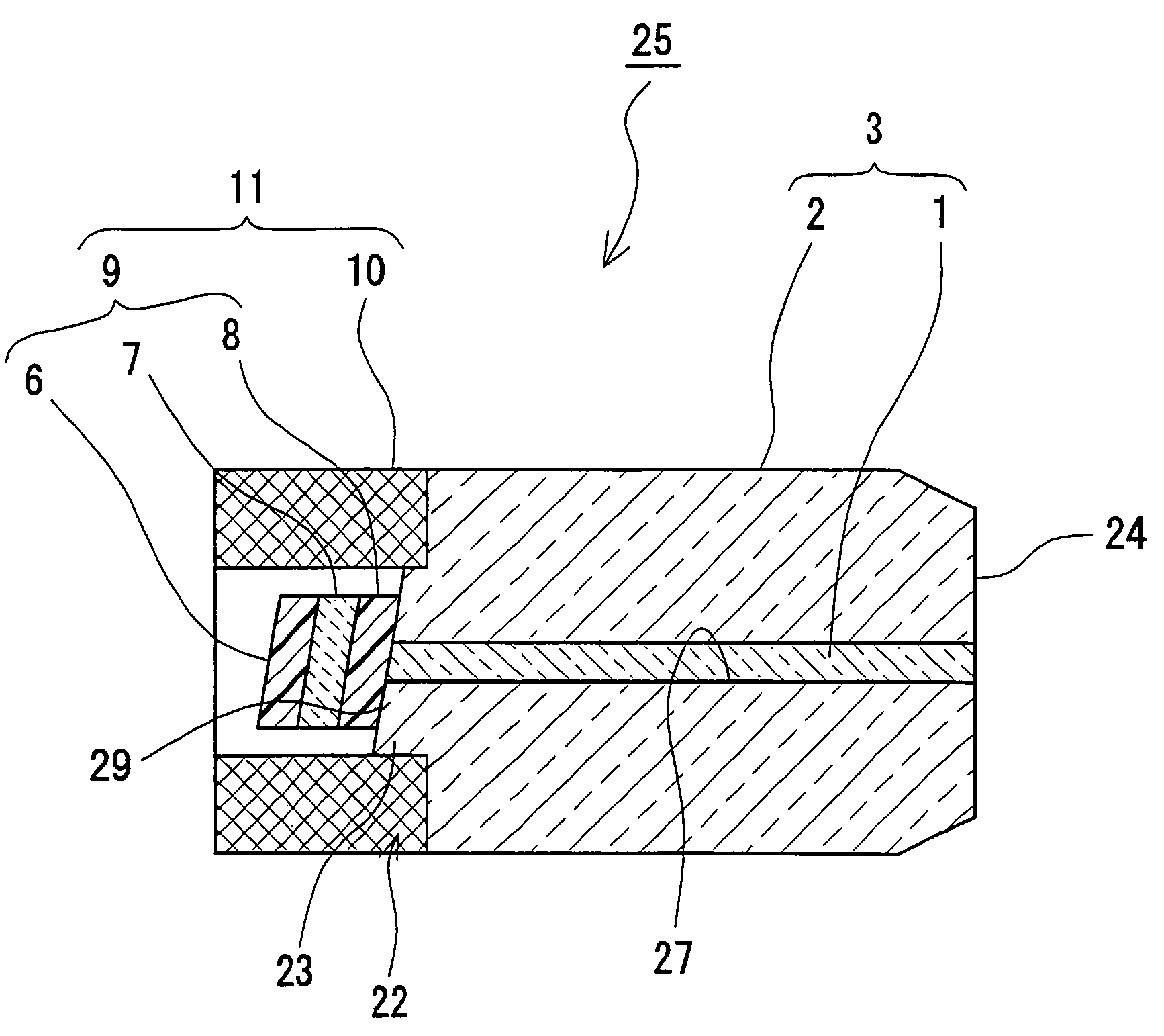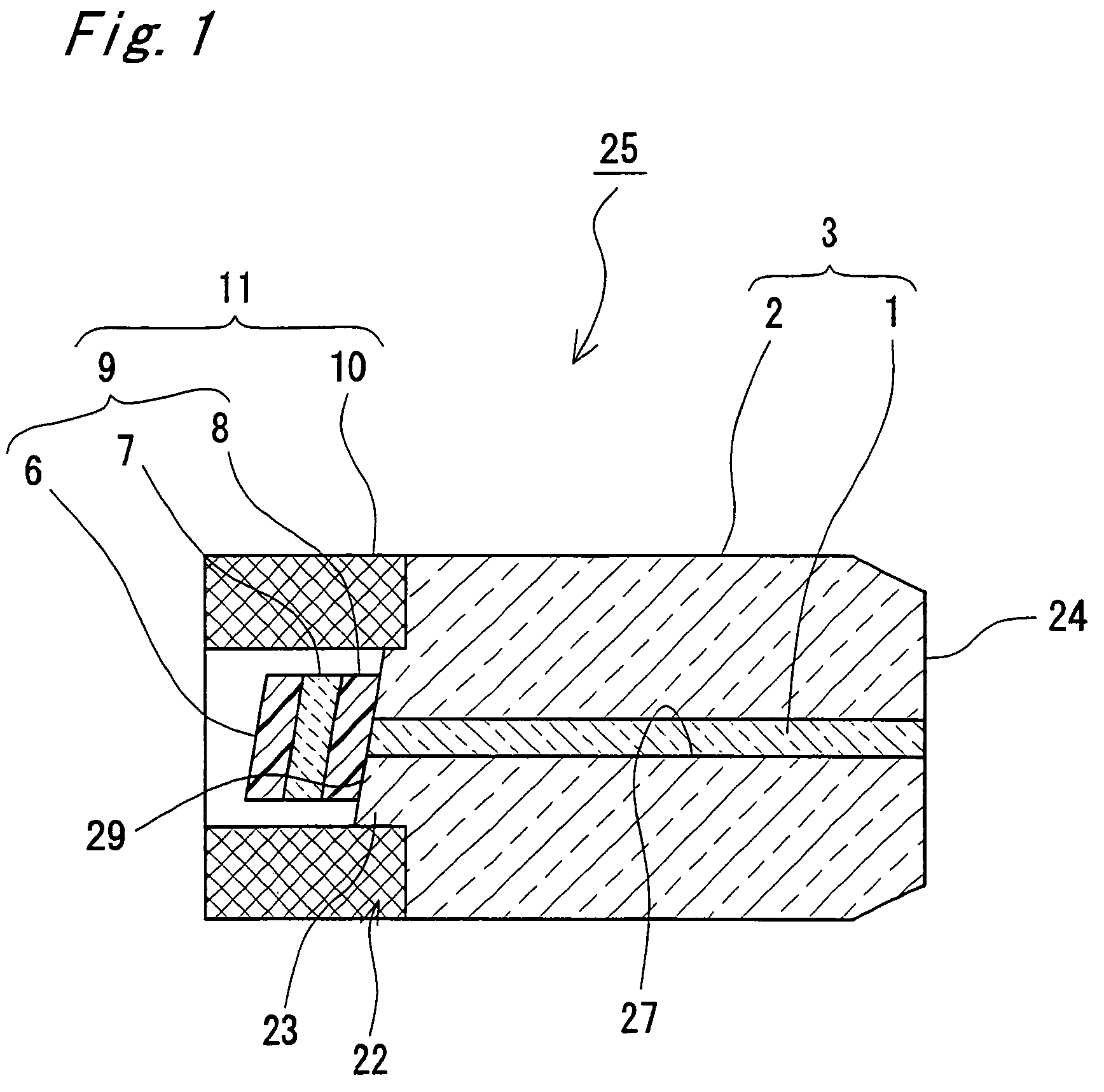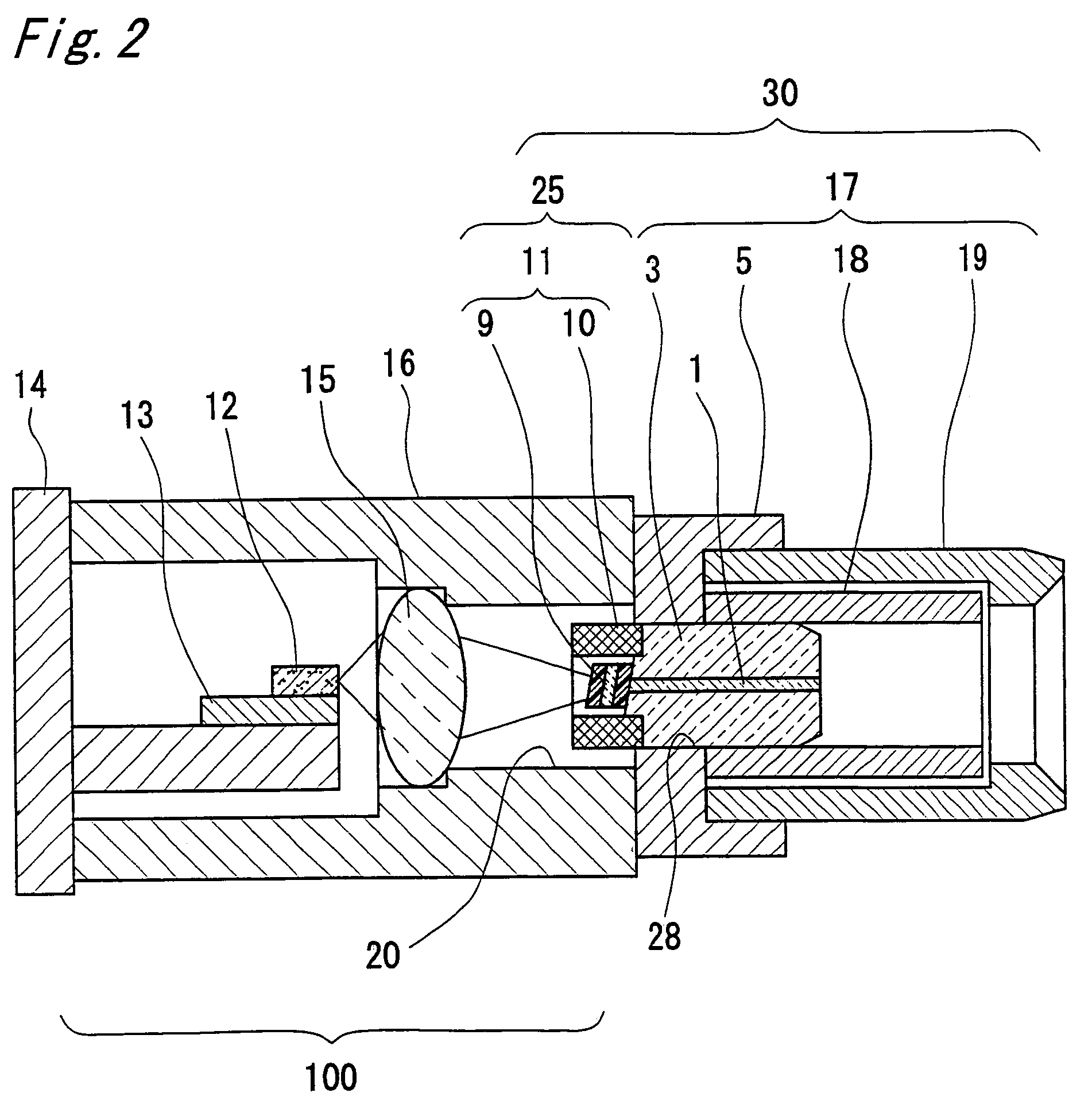Fiber stub with optical element, optical receptacle and optical module
a fiber stub and optical element technology, applied in the field of fiber stubs with optical elements, optical receptacles and optical modules, can solve the problems of increasing the total size of the optical module, unable to regulate the position of the optical element, and the outer diameter of the magnet b>10/b> becoming large, so as to achieve simplified isolation
- Summary
- Abstract
- Description
- Claims
- Application Information
AI Technical Summary
Benefits of technology
Problems solved by technology
Method used
Image
Examples
examples
[0086]In the following, an optical module having a fiber stub with an optical isolator as shown in FIGS. 1 and 2, as well as an optical receptacle, was fabricated as an example of the present invention. The optical module was a coaxial optical receptacle type semiconductor laser module.
[0087]As shown in FIG. 1, d fiber stab 3 was formed by securing the optical fiber 1 by means of adhesion to the through hole 27, of which outer diameter was 1.25 mm, located at the center of the ferrule 2 made of zirconia. A step 22 was formed by processing the front end side of the fiber stub 3, and thus, a protrusion 23 having an outer diameter of 0.5 mm was provided. Then, the surface 29 of the protrusion 23 was polished to incline by 8°. In addition, the rear end surface of the fiber stub 3 was polished to have a curved surface so that it could be engaged with the end of a plug ferrule of an optical connector, which is not shown.
[0088]Meanwhile, as shown in FIG. 3, the surface of the optical isola...
PUM
 Login to View More
Login to View More Abstract
Description
Claims
Application Information
 Login to View More
Login to View More - R&D
- Intellectual Property
- Life Sciences
- Materials
- Tech Scout
- Unparalleled Data Quality
- Higher Quality Content
- 60% Fewer Hallucinations
Browse by: Latest US Patents, China's latest patents, Technical Efficacy Thesaurus, Application Domain, Technology Topic, Popular Technical Reports.
© 2025 PatSnap. All rights reserved.Legal|Privacy policy|Modern Slavery Act Transparency Statement|Sitemap|About US| Contact US: help@patsnap.com



